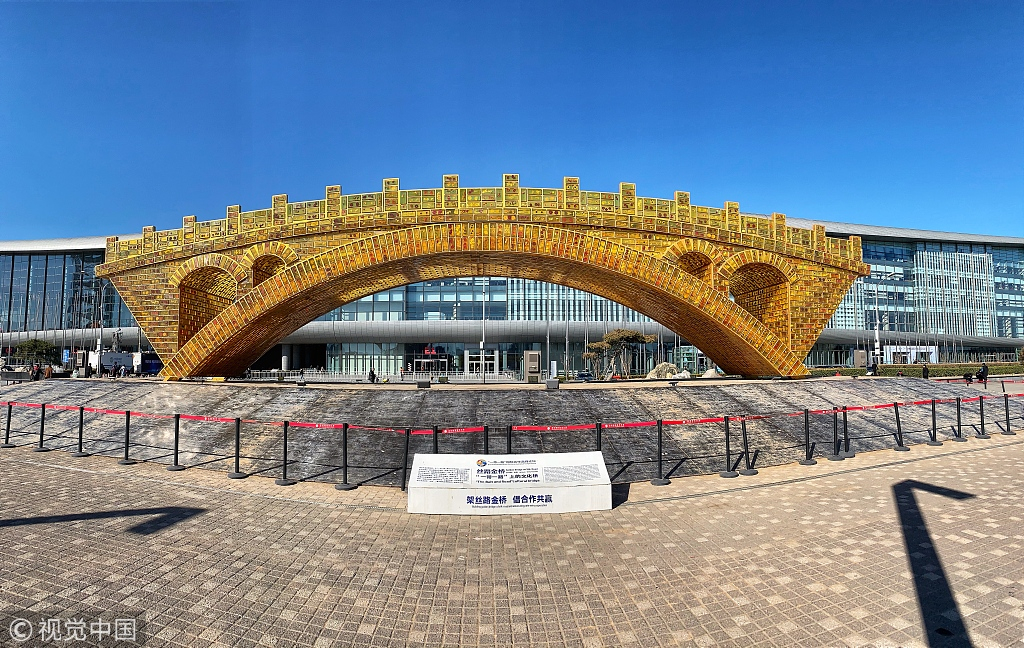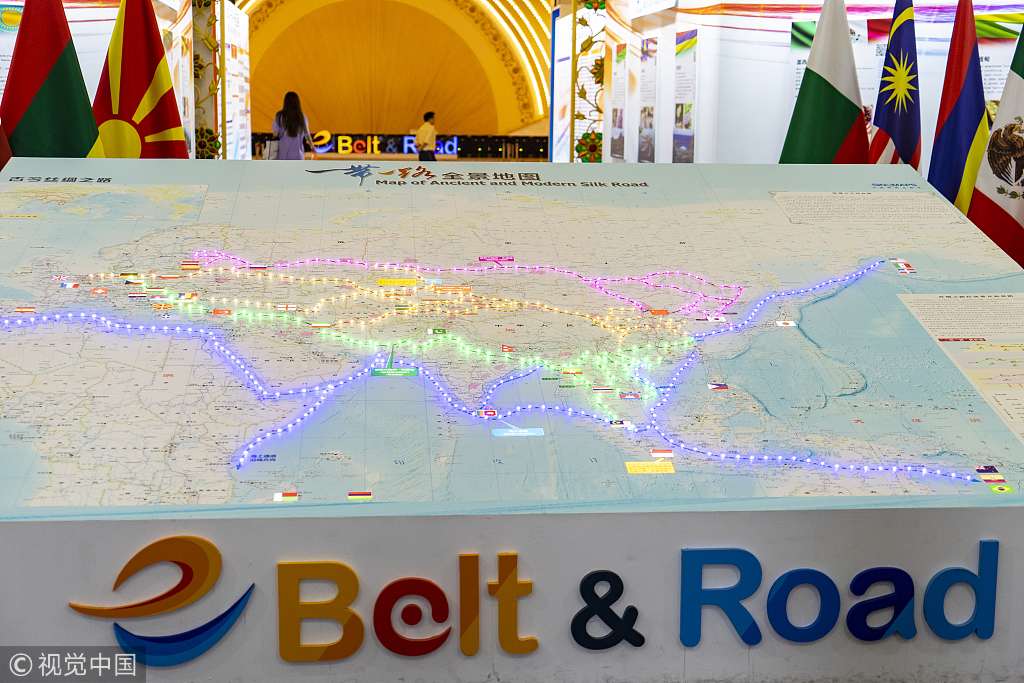
Opinion
11:16, 21-Mar-2019
Shared Future for Mankind highlights interactional dynamics
Jia Wenshan

Editor's note: Jia Wenshan is a professor at the School of Communication at Chapman University, and a research fellow of National Academy for Development & Strategies at Renmin University of China. The article reflects the authors' views, and not necessarily those of CGTN.
Community of Shared Future for Mankind (CSFM) is China's signature foreign policy vision, which has received significant global traction. After Xi proposed the idea on the international platform for the first time at the Moscow State Institute of International Relations in March 2013, it received wide acclaim with Xi's remarks on it at the Davos Forum in January 2017 and was adopted by the United Nations Security Council Resolutions in November the same year.
CSFM is the highest level of community constituted layer by layer by several other kinds of communities such as community of universal security, community of shared responsibility, and community of common interest. I dare to add that right before all these kinds of communities emerge, which President Xi suggested, a community of interlocutors must be created first and foremost and permeate the ongoing workings of all other four levels of communities.
Interactional dynamics are highly important and this explains why the Belt and Road Initiative (BRI) proposed by President Xi in 2013 as one of the most important projects to operationalize CSFM, centers on investing in connectivity/communication, facilitating change/transformation, and creating consensus and commonality while respecting diversity.
Underlying the concept of connectivity/communication is the Chinese concept of "guanxi", an ever-expanding nexus of relations via socialization of various sorts such as trade and tourism. It is the Chinese belief that the world as we know is not only interconnected but also inherently relational, and thus the optimum unit of action for maximum result is a group rather than an individual. An ever-expanding group can be formed only by each individual contributor in the establishment and cultivation of an ever-growing network of social relations. This is not only true to a person, but also to a corporation, a nation-state, and even a civilization.

"Belt and Road" cultural bridge. /VCG Photo
"Belt and Road" cultural bridge. /VCG Photo
While BRI is found to have been effectively easing and expediting this process, turning strangers (be it a person, corporate entity, nation-state or a civilization) into "cooked" acquaintances, meaningful partners, allies, or friends, "Belt" and "Road" in BRI themselves constitute a contemporary metaphor for a pragmatic worldview of relationality. Underlying this relational "tianxia" worldview, which is one that underscores inclusiveness, is also an inherent acknowledgment of common humanity (in extension a common destiny), equality, and the humanistic tenet of living and let live/win-win.
The Ancient Silk Road which has partly inspired the emergence of BRI and resulted in facilitating cultural exchanges instead of war across continents via trade embodies the power of this enduring philosophy.
Also, to better understand connectivity/communication related to BRI, one is advised to do so in association to the concept of "change", in the forms of "biantong", meaning "change-connectivity/communication, and "tongbian", meaning "connectivity/communication-change". These two constitute a chain of action in the implementation of BRI.
In the first half of the chain, there are efforts to remove all obvious barriers and forces of resistance (both mental and physical) against connectivity/communication. Once connectivity/communication reach the first stage and induce more change, it would, in most likelihood, bring about more qualitative and subtle change such as relational transformation from mere acquaintances into "cooked" relations or partners.
This signals the emergence of some intercultural consensus or even transcultural synergy and would further act upon and induce more qualitative, a deeper level of connectivity/communication. Thus, change and connectivity/communication act upon each other and raise each other up in an ever uplifting fashion. Such is arguably the basic mechanism underlying the process in the construction of a community of shared future for mankind.
Some people, friends and foes alike, are confused about China's centennial goal of the complete modernization and renaissance of China by the middle of the 21st century and its relationship between BRI and CSFM. In light of the Daoist philosophy, China's renaissance and CSFM are not inherently contradictory.
In fact, the two complement and reinforce each other. As President Xi states, "China will be in good condition only when the world remains in good condition; only when China is in good condition can the world improve itself."

Shanghai "Belt and Road" exhibition. /VCG Photo
Shanghai "Belt and Road" exhibition. /VCG Photo
For one thing, for many years in a row, China's annual economic growth rate has stood for 30 percent of the world's annual economic growth rate and it has become a powerful engine for the growth of the world economy with the implementation of BRI around the world.
Spearheading the vision of CSFM, China demonstrates a deep commitment to the concept of common security, world peace and prosperity. China has been taking the lead in operationalizing the vision of CSFM via BRI as a major platform. This explains why The Pew Global Attitudes & Trends has recently rated China significantly higher than the U.S. and higher than the last year.
In conclusion, CSFM not only highlights a historically unprecedented degree of global interdependence, an irreversible trend which many people ignore and some political forces defy, but also it marks the urgency of taking concrete actions for the construction of CFFM.
BRI has been a platform inviting joint participation in order to make the world more globally interconnected. China alone cannot accomplish it. It demands the support and participation of not only all national governments, transnational organizations, and the global society, but also private sectors of all nations including China. After all, while CSFM is initiated by China, it is a common vision of all, by all, and for all. So, as a fellow human, what can you do to make a contribution?
(If you want to contribute and have specific expertise, please contact us at opinions@cgtn.com)

SITEMAP
Copyright © 2018 CGTN. Beijing ICP prepared NO.16065310-3
Copyright © 2018 CGTN. Beijing ICP prepared NO.16065310-3